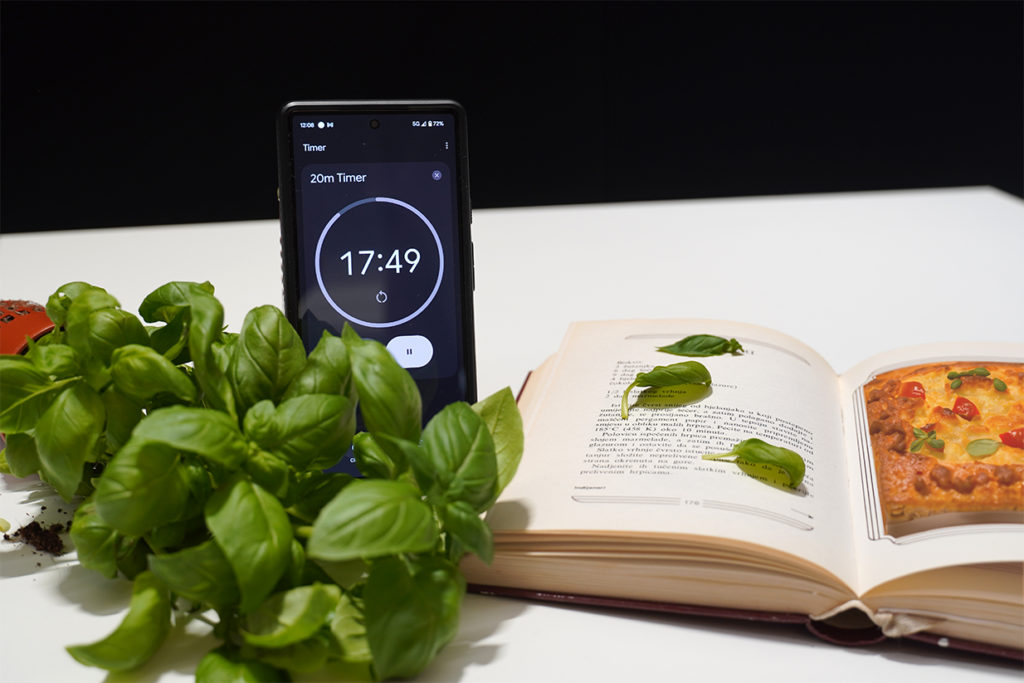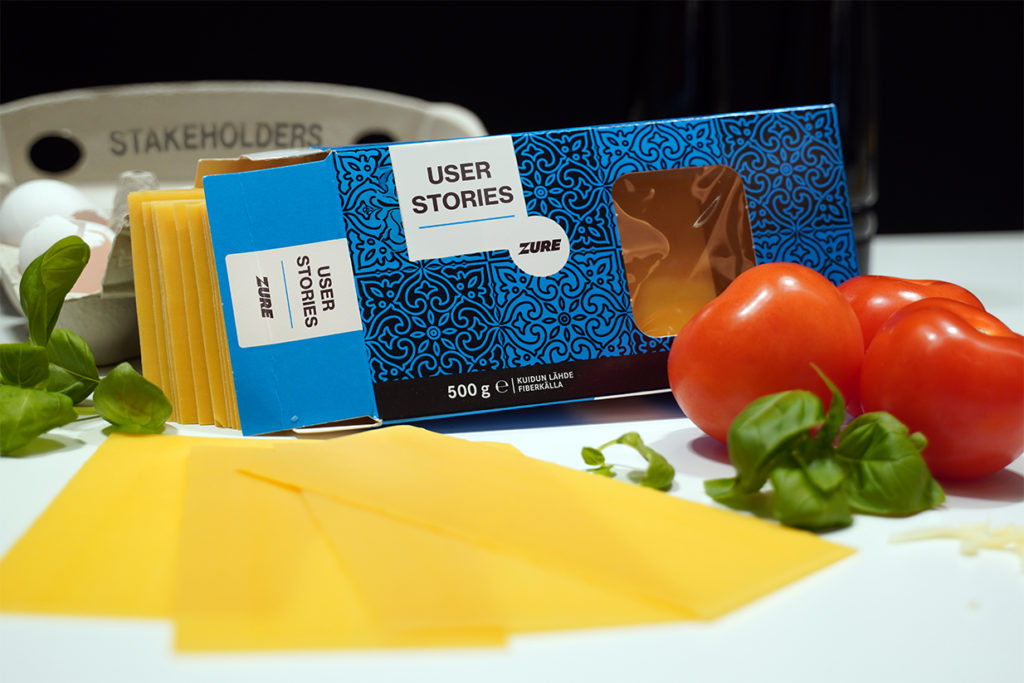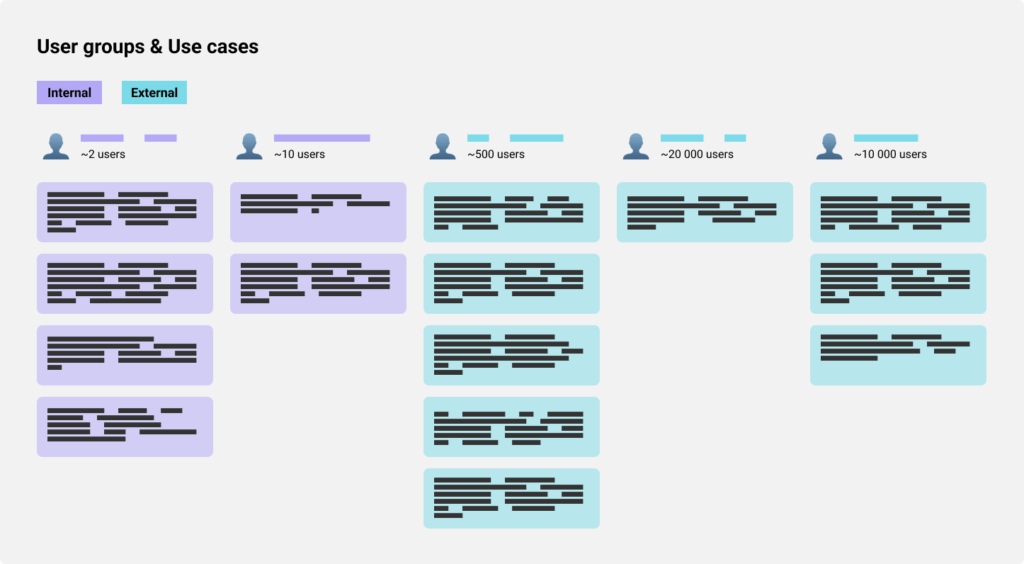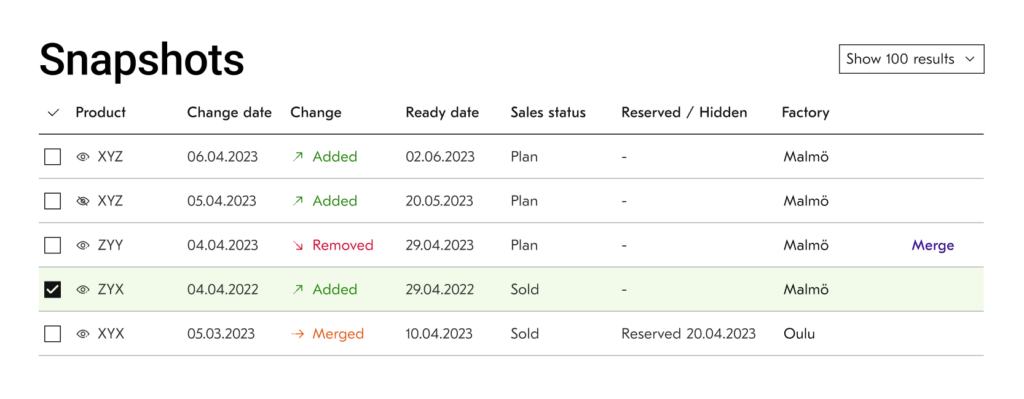
RECIPE - Modern Product Management Casserole
INGREDIENTS
- 1 experienced software development team with expert knowledge of Azure
- 1 outdated product availability and order management system
- 1 client with a vision and dedication to high quality
- A mix of discovery design, architecture, and Azure integrations
- A touch of user roles for data quality control
- A generous portion of high-performance, intuitive, and user-friendly user interface
- A pinch of modern Design System
- A handful of security and quality assurance
- A sprinkle of automation, smart tools, and enhancements
- 3 Cups of onboarding and training for new and old users
- A dollop of clear visibility for product availability and order management
INSTRUCTIONS
- In a large mixing bowl, combine the experienced software development team with the outdated system. Stir well to ensure a smooth transition toward a modern web application.
- Blend in a mix of discovery design, architecture, and Azure integrations, creating a solid base for a well-rounded and successful project.
- Gradually add automation to the mixture, ensuring that data flows are as seamless as possible and users' daily work enhanced.
- Sprinkle in a high-performance, intuitive, and user-friendly user interface, leveraging the existing Design System and user feedback.
- Stir in a generous portion of security and quality assurance, conducting audits and testing all features thoroughly.
- Add a touch of user roles for editors and viewers, ensuring control over data quality and avoiding clutter in the user interface.
- Dollop in clear visibility for product availability across manufacturing locations for internal users and distributors.
- Gently fold in onboarding and training for new and old users, making sure the global change to a new application is done with care.
- Serve the Modern Product Management Casserole to your global organization and enjoy improved efficiency, a pleasant user experience, and streamlined processes. Bon appétit!
Recently, our team completed a highly successful project for a client in which we replaced an outdated product availability and order management system with a state-of-the-art solution. The previous system was on its last leg and no longer viable for modern requirements, hindering employee motivation and innovation. I started thinking about the amount of complexity and challenges we faced and what was the recipe for our success?
SETTING THE GOALS
MAIN INGEDIENT:
Time and care! Set clear expectations and goals that serve the business and users.

The critical issue was that all the information in the old system was 100% manually updated data. We clarified some goals with that on mind:
- Replace the old application for handling product availability and order management with a modern web application that greatly reduces manual tasks and includes smart features to improve daily work.
- Automate as many data flows as possible.
- Focus on high performance, intuitive, and user-friendly user interface, utilizing existing Design System.
Alongside the main goals, the team collaborated with business users to establish these additional objectives:
- Smooth onboarding for both new and old users, ensuring globally a careful transition to the new application with proper training and support.
- Emphasize security and quality assurance through regular audits, comprehensive testing by QA specialists, and validation by business users.
- Implement user roles for editors and viewers to maintain data integrity and prevent UI clutter.
- Improve visibility of product stock in all manufacturing locations for both internal users and distributors with access to online sales.
DISCOVER TOGETHER
MAIN INGREDIENT:
Preparation! Collaboratively research, comprehend, prioritize, and design the future system.

When looking to create any kind of app replacement with the possibility of multiple integrations and 600+ internal users worldwide, it would be unwise to jump right into the implementation part.
Initially, we conducted a three-month Discovery phase, during which Service Designers and Azure Experts held workshops and collaborated on various topics with client stakeholders. These sessions were conducted online using Miro, engaging 15 client participants from different regions of Finland and other countries.
Simple Goals for Discovery
- A baseline for the project and a proof of concept
- Clear implementation plan, including initial cost estimates
- A shared understanding of the user, business, and technical requirements
Deliverables of Discovery
- Prioritized list of business and user requirements
- Prioritized technical requirements
- Clarifications of top use cases
- An initial UI mockup with limited interaction design
- Technical approach and plan, including:
- Architectural diagram
- Azure resources, their purpose, and estimated costs
- Scalability, authentication, security- and user group-related considerations
- Initial estimates of work
- Presentation of results
- Suggestions for the next steps


Thinking of doing a similar Discovery?
Find the right things to do through Discovery
IMPLEMENTATION
MAIN INGREDIENT:
Team effort! Build open communication, work together like a team, and listen to each other to find the best way for every step of improving the quality.

Our project was a grand adventure, bringing together a multitude of teams and requiring taking a few different system dependencies into account. Throughout the process, we focused extensively on quality assurance, top-notch usability, rock-solid security, and seamless integration with other systems. This meant daily interactions with the main business users from client stakeholders and Zure’s team of experts.
Many chefs, but they all know what they do
Typical of any software project, sometimes team spirit was tested by tough challenges and situations, be it budgetary, human, or technical. We had designers, quality experts, support, scrum master, architects, and developers all mixing their expertise into the same pot to create cohesive and functional software. When all team members had a clear understanding of their responsibilities and we took care to create open communication with everyone throughout the 1,5-year long project. Since we fostered a true partnership collaboration, in the end, we always made it work.
Sure, we had a designated Team Lead as the master chef handling the hot decision-making skillet, but it was the teamwork that whipped up a delightful recipe for success! Everyone was encouraged to communicate, question the approach, and collaborate with the owners and users. It was all about that shared knowledge. This way, we avoided communication bottlenecks and made sure everyone felt at ease taking a vacation or a sick day. Nothing crumbled, as teammates could step in, fill the gaps, and support one another.
"Don't be afraid to challenge the approach."
A wise young Zure person
The people binding ingredients were an efficient use of acceptance criteria, continuous exploratory testing, and transparency in all phases of the project. With acceptance criteria in place in each story, we all had a clear and shared understanding of what we were trying to accomplish. With acceptance criteria, it was comfortable to execute exploratory testing; a modern approach to testing that combines simultaneous learning, test design, and execution. Whether it was a bug, a need for user story clarifications, or changes in ways of working we always had efficient communication channels to nurture a culture of transparency and continuous improvement. Specifically, Teams, Jira stories, and comprehensive Confluence documentation with up-to-date UI specifications.
When out of an automation ingredient, how to replace it?
From the Discovery phase, we had some gaps in knowledge and plans on how we can implement certain manual bits to automatic ones. A major one was an integration bringing data from a 3rd party system to our system. Our goal was to automate all data flow to reduce the manual work and it proved to be... mostly possible. When it came to products in their early planning phase, automation proved tricky.
The tricky part was a certain part of planning orders in 3rd party system, where a change to one of the order's values deletes the planned order and creates a new one to replace it. This meant that, within our system, we could potentially see two planned orders instead of one, unless we figured out a way to identify them as the same. Automating this process proved to be a technical impossibility, as the data lacked a crucial link between the two information pieces. We had to change the ingredient on this one. We needed to solve this one with a manual helper feature.

Snapshots! We agreed that this had to be done manually, so with the lead of our UX designer and the business users, we identified the best ways to connect two planned orders in a table view. We created UI and interaction enhancements so that a few expert users could collaboratively keep up with daily changing planned orders and mark them handled as they come in. The planned orders that are identified as being the same could be merged into one planned orders row with just a few clicks, with the aid of set business rules that by default know how usually these types of planned orders should be updated.
We learned a lot by doing this and got so confident with some of these business rules that we allowed some automatic merging to happen without any user interactions. These still showed up on the list for manual inspection and verification for tracking purposes.
Tasting the produce before the user eats it
We were dealing with a lot of data that comes from multiple sources. Making sure that data is correct and as fresh as possible is vital to global business. To address this challenge, we employed Azure monitoring and alerts, establishing data points and thresholds designed to catch issues before they could wreak havoc!
Even before users had the chance to spot and report discrepancies or outdated information, our system sprang into action, sending alerts to a dedicated Teams channel and notifying us via email about potential data quality issues. With this early warning system in place, we could promptly investigate, resolve the problem, and deploy the fix through our change management process.
Baked and ready to be served worldwide
We stayed on schedule throughout the project and managed to implement everything we had in our minds, one way or another. We went deep into details with all the features and put time and care into it. We listened and learned, executed, and tested. Without first digging deep, we would serve a half-baked system.
The user interface and experience received much positive feedback. By involving our users in every decision from beginning to end - resulting in a remarkable 8.4/10 end-of-project user feedback score - we designed an easy-to-use and useful solution. Users appreciated the option to personalize their views, showing only the information they needed, and noticed a significant improvement in data quality due to connecting with the ERP system. Furthermore, our efforts to integrate and automate processes greatly reduced duplicated tasks, allowing more effective use of staff resources and boosting overall productivity.
PROJECT COOKING TIME
05 / 2021
- Discovery workshops x 3 with ~15 client stakeholders
- Understanding of user, business, and technical requirements
- Implementation plan, including initial cost estimates and scope
06-09 / 2021
- Detailed design phase
- Dig further into details and create a comprehensive journey map for a product (future outlook)
- UI mockups (Sketch+Abstract) using Design System to help visualize the application
- Start of implementation (data, models)
09 / 2021 - 05 / 2022
- Version 1.0. design and implementation using SaFe framework
03.05.2022
- Launched globally to production!
05 / 2022 - 12 / 2022
- Listening to user feedback, user feedback survey (8.4/10), improving the usability and efficiency
- 1.1. version new feature design and implementation
PROJECT BASE AND SPICES
Technical
- Azure App Services
- Azure Active Directory
- Azure Application Insights
- Azure Monitoring & Alerts
- Azure DevOps
- Azure Pipelines (infrastructure code)
- Azure Functions
- Azure Service Bus
- Azure Data Lake
- Azure SQL
- React + TypeScript
- Recoil
- Tailwind CSS
Design
- Client's Design System
- Figma (migrated from Sketch during the project)
- Zeroheight (migrated from Abstract during the project)
- Miro
QA
- Focus on releasing thoroughly tested and completed features by the acceptance criteria
Teamwork & communications
- JIRA
- Confluence
- Teams



